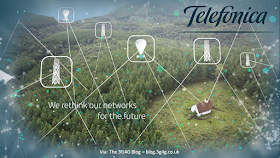Earlier, I wrote a detailed post on how Telefonica was on a mission to connect 100 Million Unconnected with their 'Internet para todos' initiative. This video below is a good advert of what Telefinica is trying to achieve in Latin America
I recently came across a LinkedIn post on how Telefónica uses AI / ML to connect the unconnected by Patrick Lopez, VP Networks Innovation @ Telefonica. It was no brainer that this needs to be shared.
In his post, Patrick mentions the following:
To deliver internet in these environments in a sustainable manner, it is necessary to increase efficiency through systematic cost reduction, investment optimization and targeted deployments.
Systematic optimization necessitates continuous measurement of the financial, operational, technological and organizational data sets.
1. Finding the unconnected
The first challenge the team had to tackle was to understand how many unconnected there are and where. The data set was scarce and incomplete, census was old and population had much mobility. In this case, the team used high definition satellite imagery at the scale of the country and used neural network models, coupled with census data as training. Implementing visual machine learning algorithms, the model literally counted each house and each settlement at the scale of the country. The model was then enriched with crossed reference coverage data from regulatory source, as well as Telefonica proprietary data set consisting of geolocalized data sessions and deployment maps. The result is a model with a visual representation, providing a map of the population dispersion, with superimposed coverage polygons, allowing to count and localize the unconnected populations with good accuracy (95% of the population with less than 3% false positive and less than 240 meters deviation in the location of antennas).
2. Optimizing transport
Transport networks are the most expensive part of deploying connectivity to remote areas. Optimizing transport route has a huge impact on the sustainability of a network. This is why the team selected this task as the next challenge to tackle.
The team started with adding road and infrastructure data to the model form public sources, and used graph generation to cluster population settlements. Graph analysis (shortest path, Steiner tree) yielded population density-optimized transport routes.
3. AI to optimize network operations
To connect very remote zones, optimizing operations and minimizing maintenance and upgrade is key to a sustainable operational model. This line of work is probably the most ambitious for the team. When it can take 3 hours by plane and 4 days by boat to reach some locations, being able to make sure you can detect, or better, predict if / when you need to perform maintenance on your infrastructure. Equally important is how your devise your routes so that you are as efficient as possible. In this case, the team built a neural network trained with historical failure analysis and fed with network metrics to provide a model capable of supervising the network health in an automated manner, with prediction of possible failure and optimized maintenance route.
I think that the type of data driven approach to complex problem solving demonstrated in this project is the key to network operators' sustainability in the future. It is not only a rural problem, it is necessary to increase efficiency and optimize deployment and operations to keep decreasing the costs.
Finally, its worth mentioning again that I am helping CW (Cambridge Wireless) organise their annual CW TEC conference on the topic 'The inevitable automation of Next Generation Networks'. There are some good speakers and we will have similar topics covered from different angles, using some other interesting approaches. The fees are very reasonable so please join if you can.
Related posts:
- Internet para todos: Telefonica and Parallel Wireless on a mission to connect 100 Million Unconnected
- Automating the 5G Core using Machine Learning and Data Analytics
- ITU 'Network 2030': Initiative to support Emerging Technologies and Innovation looking beyond 5G advances
- Artificial Intelligence - Beyond SON for Autonomous Networks
- Twitter et al. for Small Cell Planning




No comments:
Post a Comment